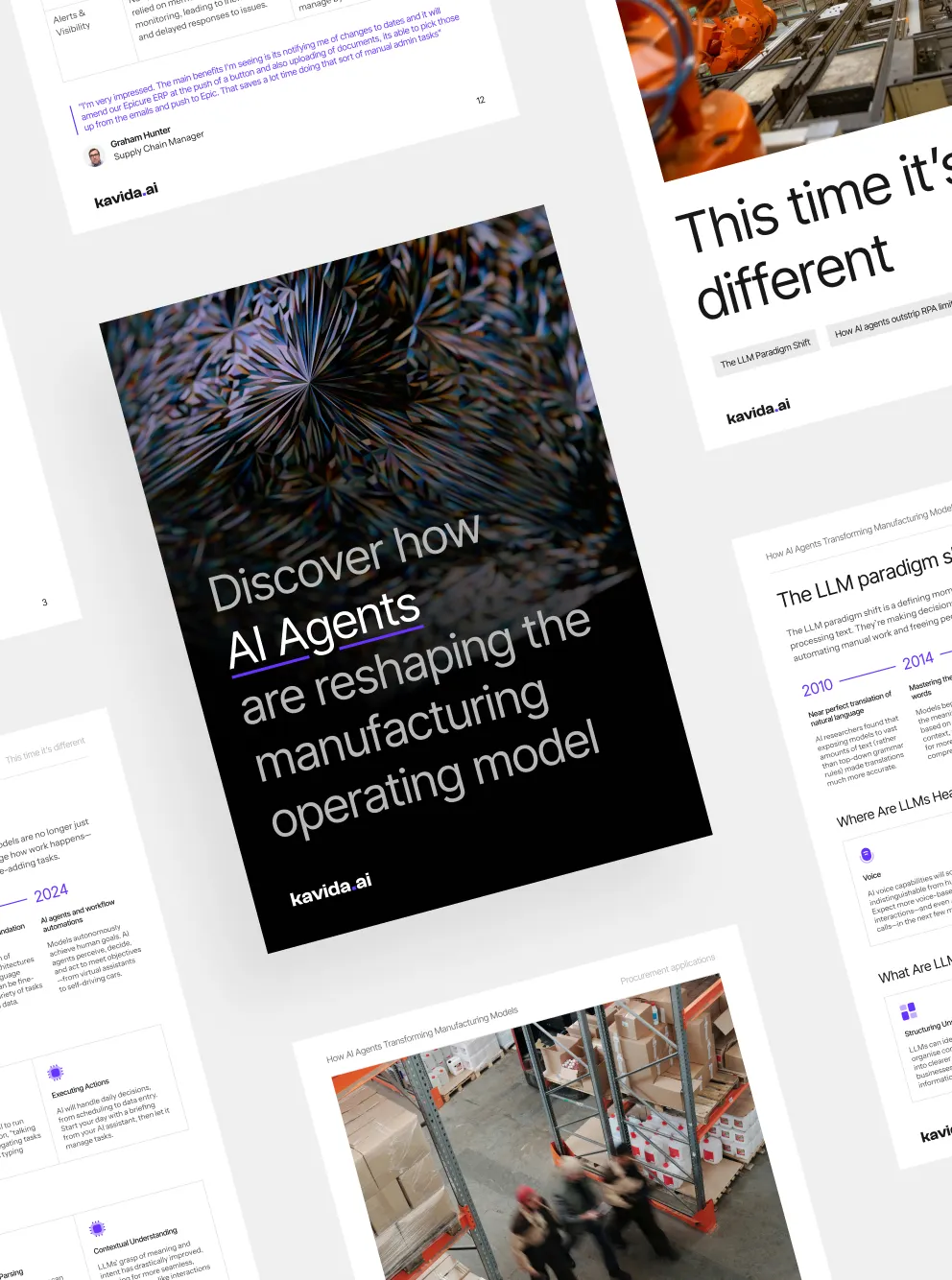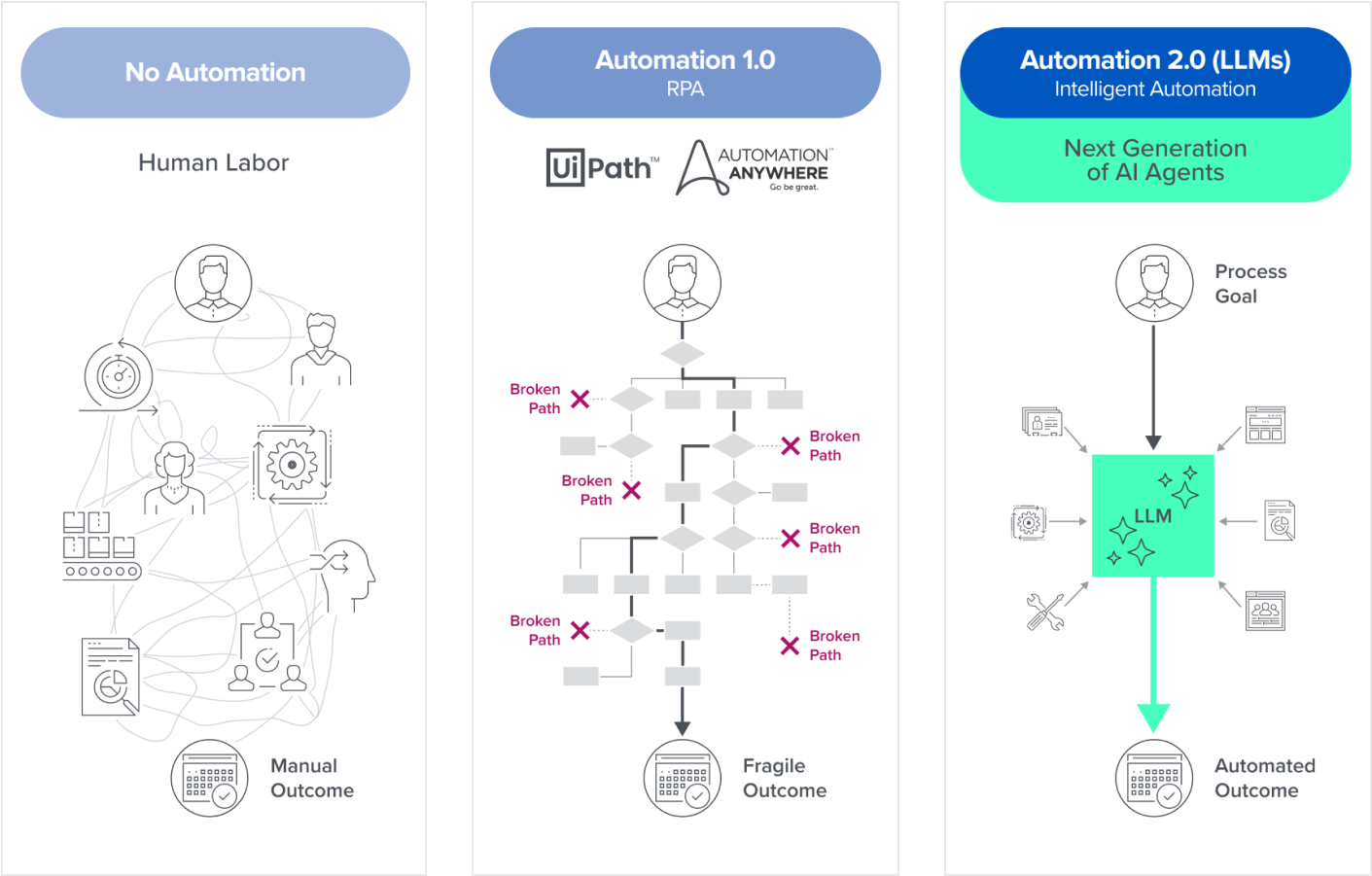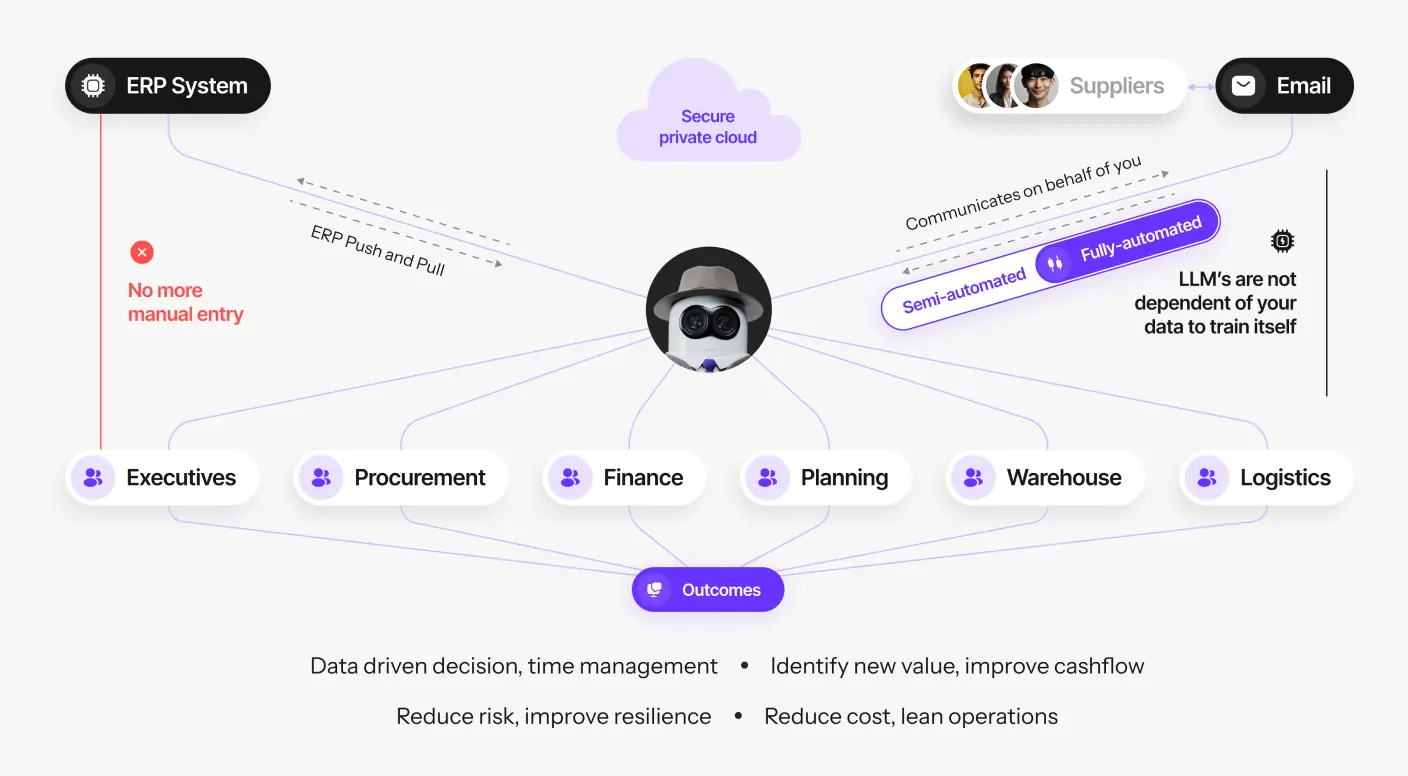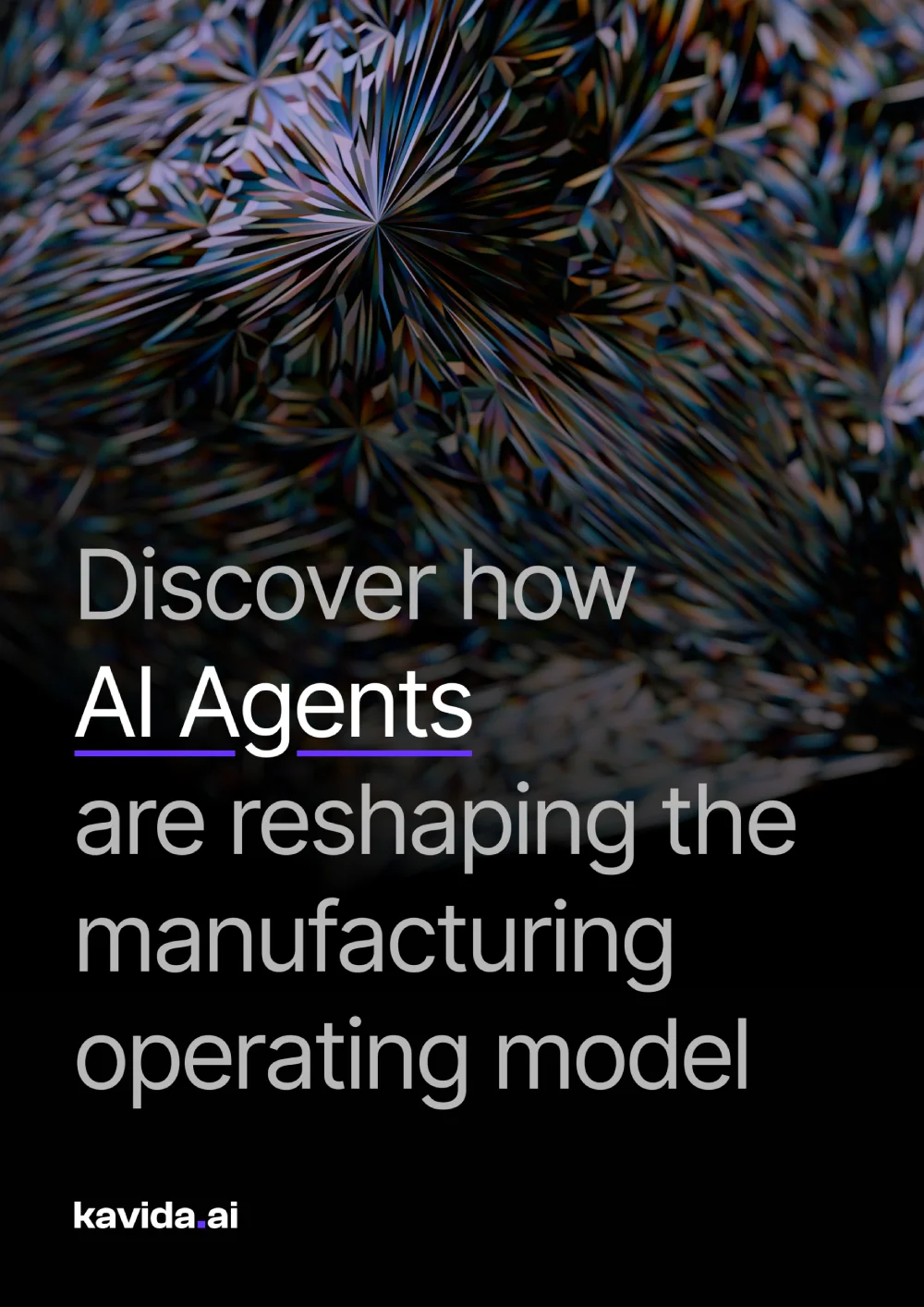
Discover how AI agents are reshaping the manufacturing operating model

Hi, I’m Alison!
Share your details, and I’ll give you a call in minutes to see how we can assist.

We’re at the frontline of AI agent applications, and the changes we’re seeing today are just the beginning of an even bigger revolution. Manufacturing as we know it is getting a radical upgrade. The entire operating model is about to shift – meaning fewer people dedicated to repetitive tasks, and more time spent on strategic, high-value work that truly moves the needle.
Small, agile teams have an inherent advantage, and AI makes this more attainable than ever. Grow without ballooning your headcount, become more competitive on pricing, responsiveness, and overall productivity. The question isn’t whether this will happen; it’s already happening.
We’re going to walk you through how. By the time you’re done reading, you’ll learn real-world applications of AI agents – from procurement workflows to multi-agent networks – and get a clear roadmap for creating a leaner, more competitive manufacturing operating model. You’ll have a practical blueprint for thriving in the agentic era.
RIP to RPA
Robotic Process Automation (RPA) gained traction over the past decade as the go-to solution for automating routine operational tasks. Bots were built to mimic human actions, like replicating clicks and keystrokes, and they worked well for rigid, clearly defined processes.
But when workflows shifted or systems updated, these bots stumbled. They couldn’t adapt to complexity or change, and fixing them often required expensive consultants. As a result, RPA became an option only for the largest companies, leaving the promise of a “fully automated enterprise” unfulfilled.
Generative AI, built on LLMs, finally delivers what RPA couldn’t: true adaptability and creativity. Traditional RPA systems relied on hard-coding every step of a process, making them rigid and prone to failure when tasks changed. Generative AI agents, however, are empowered with the tools, context, and decision-making capabilities to meet real-world complexity head-on.
Generative AI, built on LLMs, finally delivers what RPA couldn’t: true adaptability and creativity. Traditional RPA systems relied on hard-coding every step of a process, making them rigid and prone to failure when tasks changed. Generative AI agents, however, are empowered with the tools, context, and decision-making capabilities to meet real-world complexity head-on.

All credit to A16z and Kimberly Tan for the outstanding work. We send Kimberly’s article to all C-suite execs.
What is an AI Agent?
AI agents are autonomous software programs that use artificial intelligence to perform tasks, make decisions, and adapt to new environments without human intervention. They process vast amounts of structured and unstructured data, extract meaningful insights, and act based on predefined objectives.

Procurement applications
While there’s been some interest in tools like AI-powered analytics and Intelligent Document Processing (IDP), most manufacturing procurement teams are still in the early stages of embracing cognitive solutions (GEP).
- Manually updates and relies on disjointed, siloed systems (emails, ERP, CRM).
- Spends exhaustive hours on routine tasks like followups and invoice matching.
- Frequent miscommunication and slower decision-making.
- Uses AI agents to unify data across ERP, CRM, and supplier comms in real-time.
- Automates admin tasks, freeing up time to focus on strategy and supplier relationships.
- Provides full visibility to all stakeholders, with faster decision-making.
| Use case | How it works |
|---|---|
| Order confirmations |
• Agent automatically sends confirmation requests to suppliers. • Updates ERP systems in real time with supplier responses. • Flags unconfirmed orders for review. |
| Order revisions |
• Scans for updates in supplier communications and received documents. • Pushes approved PO changes directly to ERP systems. • Sends real-time alerts to teams for critical revisions. |
| Sourcing cost reduction |
• Reviews historical procurement data and market trends. • Flags opportunities for cost negotiation or alternative sourcing. • Provides actionable insights for cost optimisation. |
| Document collection & validation |
• Identifies necessary documents, tracks missing documents and sends automated reminders to suppliers. • Validates documents for accuracy and regulatory compliance. • Automatically uploads approved documents to ERP and storage systems. |
We are going to see a shift towards hybrid roles where humans complement AI capabilities. Routine tasks will decrease, enabling teams to focus on strategic problem-solving, innovation, and external activities with Suppliers and Customers.“

The agentic transformation journey
For manufacturers adopting AI agents, the journey is phased. It starts with solving specific operational challenges and grows into an interconnected system where agents can work together.

Authors & guest contributors





